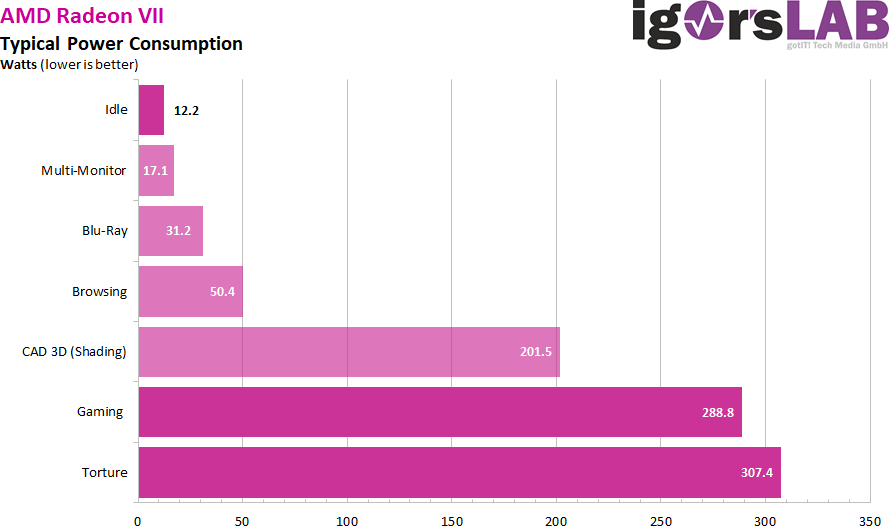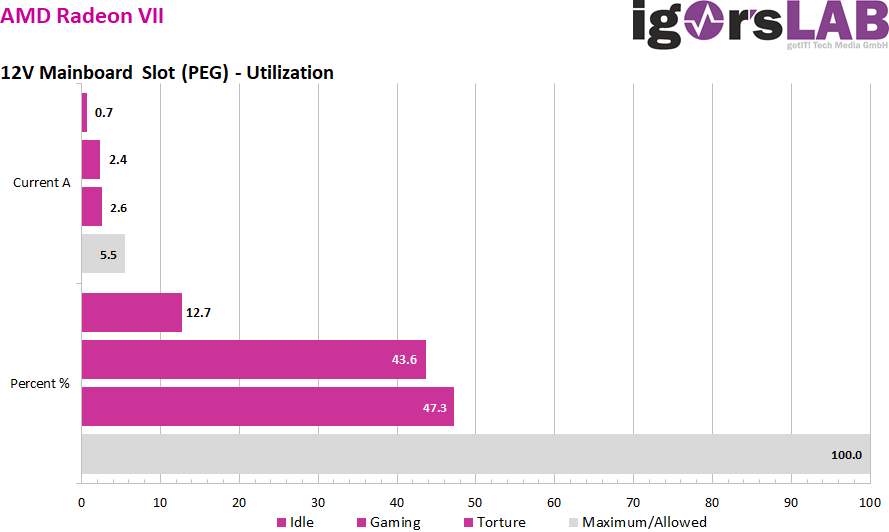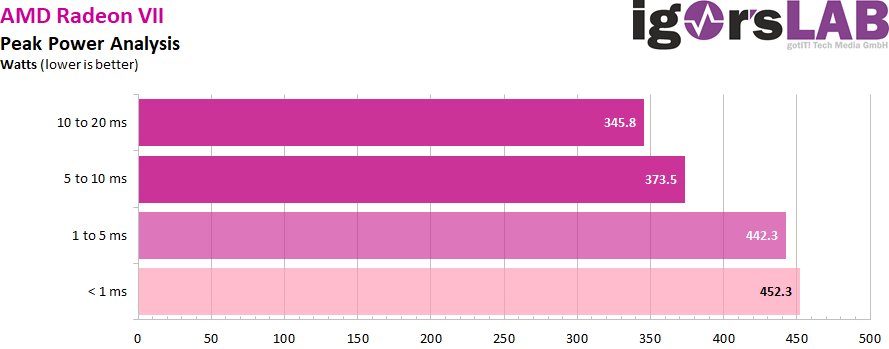Power consumption and loads
The power consumption of this card is approx. 12 watts in the idle very good in the race for the ecologically most valuable calf. With the gaming loop, you are in the range of the propagated TBP of 300 watts with just under 289 watts and in the Torture loop with a good 307 watts. You get the card in 4K or 5K resolutions also with the gaming loop just over 300 watts, if you provoke it and e.g. fully utilized the memory. For more, however, you would have to set the power limit, which seems rather counterproductive.

Since AMD relies on a completely new API, the traditional monitoring programs such as GPU-Z this time no support, because AMD has either refused to support the vendors (e.g. Aida64) or the information simply offered too late (e.g. GPU-Z). In the end, I only had AMD's own Wattman with the usual limitations (no time stamp, far too large intervals, little information and if so, often enough wrong).
This is unfortunate, especially since the API itself still seems to be somewhat flawed, because e.g. logs do not match the values displayed in the OSD. I then canceled my own programming attempts due to time constraints, but the ominous HotSpot values seem to exist again if you read directly. But until official release has taken place, I will not evaluate and publish such speculative data. The fact is, however, that AMD has obviously scored an own goal here.
The load distribution on the rails, on the other hand, is interesting, because the maximum 5.5 amperes of the motherboard slot are never exceeded. We see very impressively that AMD only feeds the GPU from the two external ports. The approx. 30 watts of THE PEG are likely to result from the supply of memory (VDDCR_HBM and VDDCI_HBM), while the SoC is expected to be supplied from the external connections.

Power supply design and peak loads/currents
As I have already demonstrated in detail in my basic article "The fight of graphics card against power supply – power consumption and load peaks demystified", there are also temporarily higher loads in the millisecond range, which are unfavorable in case of unfavorable designed or improperly equipped power supplies can already lead to unexplained shutdowns. The TBP (Typical Board Power) measured by the graphics card manufacturer or the reviewers does not really help for a stable design of the system.

Peaks with intervals between 1 and 10 ms can lead to shutdowns with very fast-reacting protective circuits (OPP, OCP), especially for multi-rail power supplies, although the average power consumption is still in the norm. For this card/ I would therefore calculate at least 370 watts for the graphics card firmly, if you don't want to experience any nasty surprises. If you rely on Noname power supplies, you should use the 400 watts as a guide, you never know…
Detailed recording of average power consumption and flowing currents
As usual, I now also set aside the power consumption and the flowing currents as detailed graphics of my oscillograph measurements. A service that hardly anyone else offers and which shows how the maps "tick" in detail:
- 1 - Einführung und Daten
- 2 - Vega20 - Was ist neu?
- 3 - Tear Down: Platinen-Analyse und Kühlerdesign
- 4 - Anwendungsbenchmarks
- 5 - Ashes of the Singularity: Escalation
- 6 - Battlefield V
- 7 - Destiny 2
- 8 - Tom Clancy's The Division
- 9 - Far Cry 5
- 10 - Tom Clancy's Ghost Recon
- 11 - Grand Theft Auto V
- 12 - Metro Last Light (Redux)
- 13 - Rise of the Tomb Raider
- 14 - The Witcher 3
- 15 - Wolfenstein II: The New Colossus
- 16 - Leistungsaufnahme und Netzteilkalkulation im Detail
- 17 - Temperaturen und Infrarot-Analyse
- 18 - Lautstärkemessungen mit Video und Analyse des Spektrums
- 19 - Zusammenfassung und Fazit








































Kommentieren